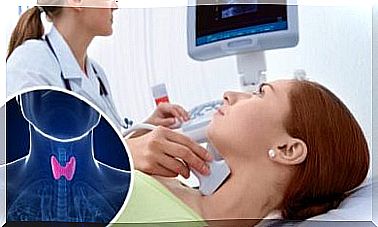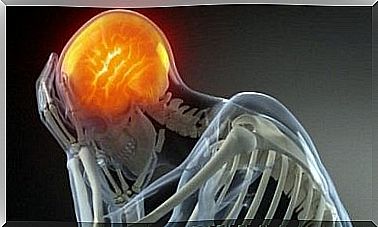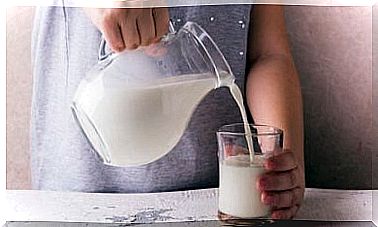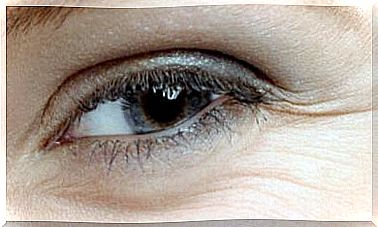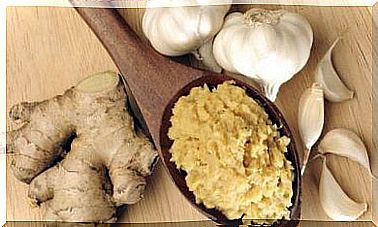Atropine: Functions And Side Effects
Atropine is a drug which acts as an antagonist of muscarinic cholinergic receptors and which exhibits a wide variety of pharmacological actions in our body.

Atropine is a natural muscarinic antagonist with an anticholinergic effect. It has mydriatic, antispasmodic, intestinal and urinary properties, as well as antidiarrhoeal, anticatarrhoeal and anesthetic properties.
This active ingredient is extracted from belladonna and other plants of the Solanaceae family . It is an alkaloid, a product of the secondary metabolism of these plants and which has, as we have seen, very varied effects.
In ancient times, Hindus were familiar with the preparations of belladonna, which they had already used for centuries. Later, in the Roman Empire and in the Middle Ages, the preparations were used for toxic purposes.
Throughout this article, we’ll tell you more about the following atropine points:
- Action mechanism
- Pharmacokinetics
- Pharmacological actions
- Side effects
However, before we start to delve deeper into this drug, we need to know what cholinergic receptors are in order to better understand their mechanism and the actions they trigger.
Cholinergic receptors

Cholinergic receptors are a group that includes two other types, muscarinic and nicotinic receptors. They are found in the synaptic cleft, most at the postganglionic level, although there are also at the presynaptic level.
The existence of receptors at this latter level is common to all neurotransmission systems. This is because they are necessary to fulfill a role of regulating the amount of acetylcholine to be released. Therefore, activation of cholinergic receptors at the presynaptic level will inhibit the secretion of acetylcholine.
Acetylcholine is a substance which is synthesized in the cytoplasm of neurons and which directly activates cholinergic receptors. It must be said that there are also presynaptic receptors which activate the secretion of this substance, but there are very few of them.
The mechanism of action of atropine
Atropine is therefore a competitive antagonist of the cholinergic acetylcholine receptor, which, as we have seen, is a substance which directly activates these receptors.
It annihilates the parasympathetic system, so it is a parasympatholytic. The explanation lies in the fact that the cholinergic receptors are located in the parasympathetic effector tissues, which is why, if atropine is administered, we will observe effects in the heart, eyes and digestive tract, among others. organs.
The pharmacokinetics of atropine

This medication can be administered in different ways: by oral, intravenous, subcutaneous, intramuscular, intraosseous and endotracheal injection. If it is administered orally, it is easily absorbed in the digestive tract and then distributed into the bloodstream.
It is a drug with high liposolubility, therefore capable of crossing the blood-brain barrier and the placenta (caution in pregnant women if they are taking atropine treatment).
Its half-life is approximately 2 to 3 hours. In addition, the liver metabolizes it between 50% and 75%. Subsequently, the metabolites and the unmetabolized fraction of the drug are excreted in the urine.
Its pharmacological actions
Pharmacological actions derive from the blockade of muscarinic receptors, which, as we have explained, are a type of cholinergic receptor. As atropine binds to these receptors, it prevents acetylcholine from interacting with them.
This blockage takes place gradually in a series of structures in our body such as salivary, bronchial and sweat glands, vascular smooth muscle, the heart system, digestive and urinary tract, gastric secretion glands and vegetative nodes.
Being a cholinergic antagonist in all of these parts of the body, here are the main actions they trigger:
- It causes tachycardia. Atropine is therefore used to increase the heart rate in a health emergency.
- At the digestive level, it decreases tone, peristalsis, spasms, colic and gastrointestinal secretions.
- It makes urination difficult. This situation is problematic in patients with benign prostatic hyperplasia.
- It causes mydriasis. Its action blocks the ciliary muscle producing a spasm by accumulation. However, blockage of muscarinic receptors in the eye does not occur if it is administered orally.
Adverse effects of atropine
The side effects of this medicine correspond to the dose administered. These are common reactions, especially in children. In addition, atropine may accumulate and produce systemic effects after multiple doses by inhalation in the elderly.
In adults, the most common side effects that can be seen are:
- Dry mouth
- Red and hot skin from lack of perspiration
- Fever
- Constipation
